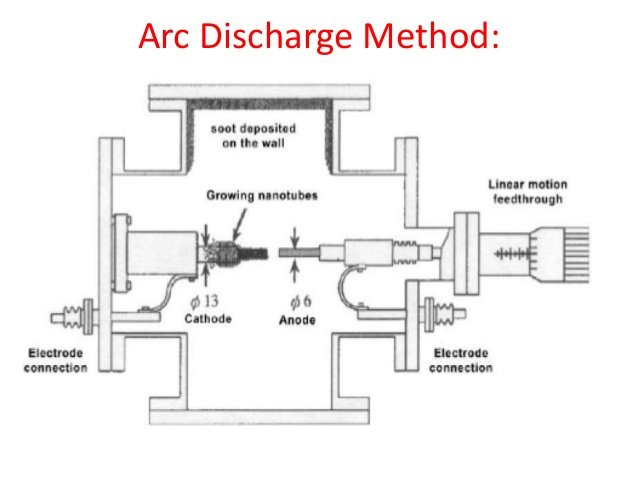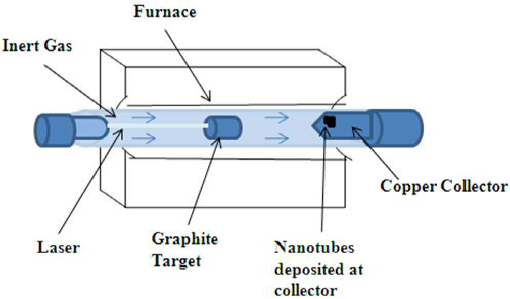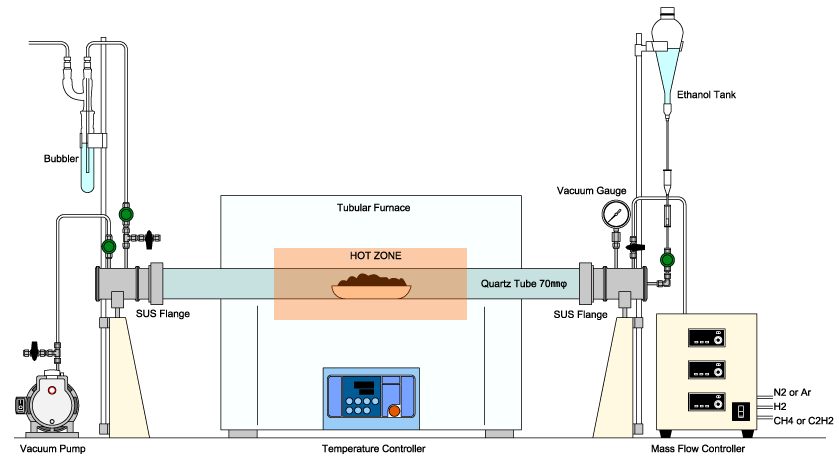Synthesis Methods for Carbon Nanotubes: Which is the best method and why?
Synthesis Methods of Carbon Nanotubes: Which is the best method and why?
Nowadays, carbon nanotubes present a great opportunity in terms of scientific advances, which is why they are synthesized and experimented with great determination. However, the amount of research and published works on this subject still is insufficient. And it is that one of the main limitations for the investigation of the carbon nanotubes, is the difficulty of its synthesis since to generate nanotubes of carbon of high quality and in plausible quantities, the use of metallic catalysts or lasers of high cost is required.
It is therefore that on this occasion I would like to take the time to explain to you in detail some of the most important methods of synthesizing carbon nanotubes.
Synthesis Methods of CNT.
 Source
Source There are various methods of manufacturing CNT, of which most are based on the subjection of materials to temperatures.
Arc discharge method.
This method uses high temperatures (around 1,700 ºC) that allow a growth of the nanotubes with fewer structural defects than the other techniques.
This method basically consists of the movement of a current through two graphite electrodes with a high purity coefficient, which causes an arc. During the arching, deposits are created on the cathode, while the anode is consumed. These deposits are wrapped with a gray mantle. The center, dark and soft, contains nanotubes and graphene particles.
For the SWCNT to be formed, a metallic catalyst is required. As the tubes are formed, the length of the positive electrode decreases and a carbon deposit forms on the negative electrode.

Source
This technique is expensive since it requires high purity graphite electrodes, metallic powders, and other materials. It should be noted that through this method there is no control over the dimensions of the CNT and in addition to these other particles are formed, so the purification is an additional step in the process.
Generally, a noble gas atmosphere is used, usually helium or argon. In this way, multiple wall nanotubes (MWCNT) can be obtained. The synthesis of single-wall nanotubes (SWCNT), of 1 - 2 nm in diameter, requires the participation of metal catalysts, such as Ni, Fe, Co, Cu, Ti, Y, Pd, Ag or Pt, used alone or in combination the construction of the anode. For example, using an anode with a content of 1% in iron in a gaseous mixture of hydrogen and argon SWCNT with a high crystallinity are obtained and by means of oxidative treatment with H2O2 to eliminate the catalyst residues a purity of more than 90% is reached.
Laser ablation method.
Both SWCNT and MWCNT can be produced by a combination of high power laser and high temperatures.
This method is similar in its mechanism to that of the discharge arc, with the difference that the energy comes from the impact of a pulsed laser against a graphite target that contains metal catalysts (such as Ni or Co), which act as centers of nucleation allowing the growth of the nanotube.
The target is inside a quartz tube, which is heated to 1,200 ºC, and next to it is a copper collector cooled with water on which the carbon atoms evaporated from the graphite that will form the nanotubes are condensed. It allows obtaining SWCNT of great quality and purity.

Source
One disadvantage is that the technique is not economical since high purity graphite is used and the laser power requirements are high. In addition, the yield of CNT produced is not high compared to other methods.
Chemical vapor deposition.
For the realization of this method of synthesizing, a substrate that acts as a catalyst is placed creating a thin film of 1 to 50 nm in a furnace with an inert helium atmosphere at a low pressure, to later heat it to 600 degrees centigrade and slowly add methane gas, acetylene or benzene, which causes carbon atoms to be released, which can recombine in the form of nanotubes.

Source
Currently, this is the standard method used in the synthesis of nanotubes, since in addition to being the most economically available for large-scale production also allows control almost at will the properties of synthesized nanotubes.
Electrolysis.
It consists of immersing graphite electrodes in molten lithium chloride in an atmosphere of Ar and using a voltage between the electrodes, in order to obtain MWCNT with yields of 20-40%. After the electrolysis, the equipment cools and the carbonaceous materials move away dissolving the ionic salt in distilled water. After filtering, the CNT and other nanostructures are located in the solids. Although it is a non-expensive technique, it is not widely used due to the difficulty it represents to control the performance and properties of nanotubes. Also, by this method, it is not possible to obtain SWCNT.
References:
- https://www.intechopen.com/books/carbon-nanotubes-synthesis-characterization-applications/flame-synthesis-of-carbon-nanotubes
- https://www.cheaptubes.com/carbon-nanotubes-history-and-production-methods-2/
- https://www.ncbi.nlm.nih.gov/pmc/articles/PMC4141964/
- https://www.nanoscience.com/applications/education/overview/cnt-technology-overview/cnt-synthesis/
- Carbon nanotubes, Silvana Fiorito
- Handbook of Environmental Degradation of Materials, Myer Kutz

Wow awesome post, I didn't know there are more methods for the carbon nanotubes syntesis
Yes, there are several methods to do it
Awesome post!
thanks
Great post! I love the way you simplified the subject!
yes, I really tried to do it that way
Congratulations! This post has been upvoted from the communal account, @minnowsupport, by giovaabbatichio from the Minnow Support Project. It's a witness project run by aggroed, ausbitbank, teamsteem, theprophet0, someguy123, neoxian, followbtcnews, and netuoso. The goal is to help Steemit grow by supporting Minnows. Please find us at the Peace, Abundance, and Liberty Network (PALnet) Discord Channel. It's a completely public and open space to all members of the Steemit community who voluntarily choose to be there.
If you would like to delegate to the Minnow Support Project you can do so by clicking on the following links: 50SP, 100SP, 250SP, 500SP, 1000SP, 5000SP.
Be sure to leave at least 50SP undelegated on your account.